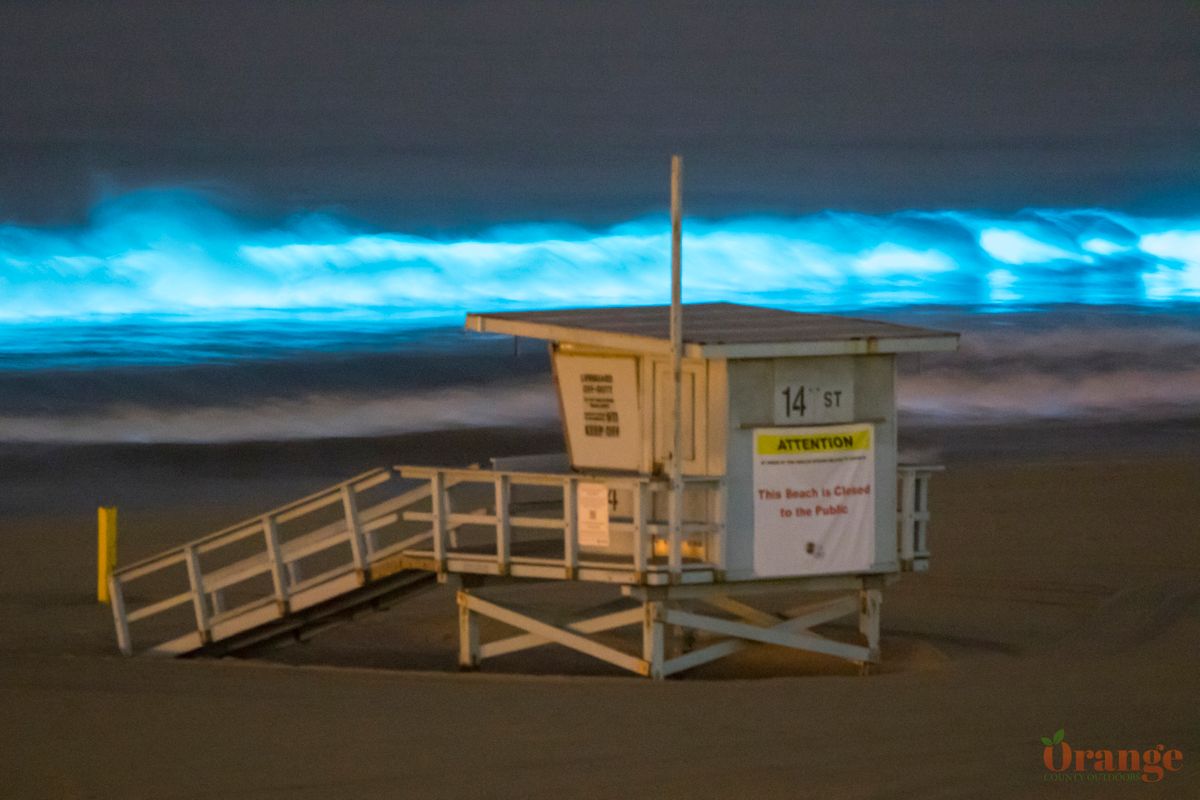Red tide has returned after Tropical Storm Hilary!
Bioluminescence is back!
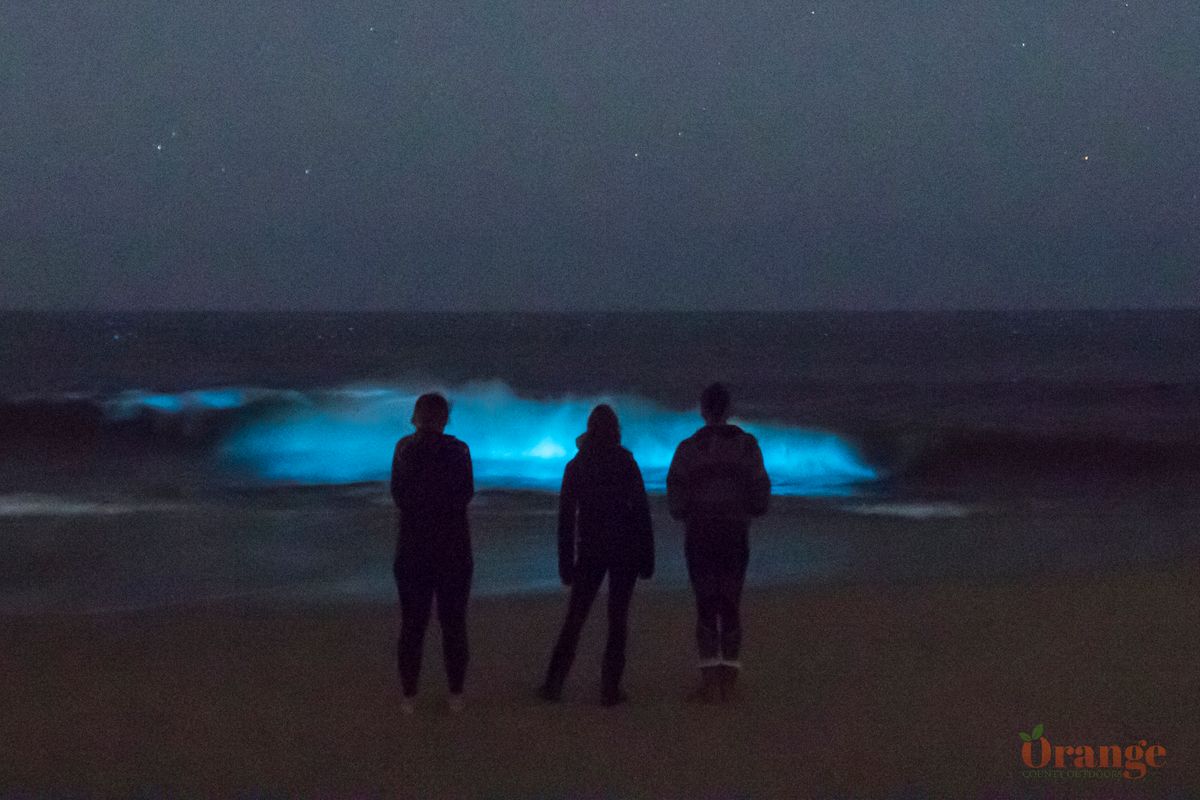
How often does this happen?
Over the last several years, we've discovered that there is some bioluminescence that appears sporadically throughout the year in Southern California. While it's not very consistent, there can be some glowing waves any month out of the year. However, after we get a good rain storm, it seems like there's thick red tide about a week or two after. This red tide causes the bioluminescent waves as the dinoflagellates light up when they're agitated. This agitation can be caused by waves crashing or from human disturbance when water is calm. The waves tend to light up best when they crash further out from the sand. While it is possible to see these glowing waves any month out of the year, some months and years are just very faint and not that noticeable. After rain storms, it basically seems to be amplified.
Where is it in 2023?
Bioluminescent waves haves been seen from San Diego County to Ventura in August and September of 2023 although it has been sporadic. Tides and currents will cause the red tide to shift around and depending on which beaches face which directions, that'll cause some beaches to be better or worse. In September of 2023, we've noticed it pretty good around Crescent Bay and Main Beach in Laguna Beach and very good in Sunset Beach. There's also been some bright waves in Oceanside and Carlsbad area. As for places where you can walk in it to have it light up, the small pools at Main Beach have been really good after the high tide fills them up, Newport Harbor and Dana Point Harbor have also had some.
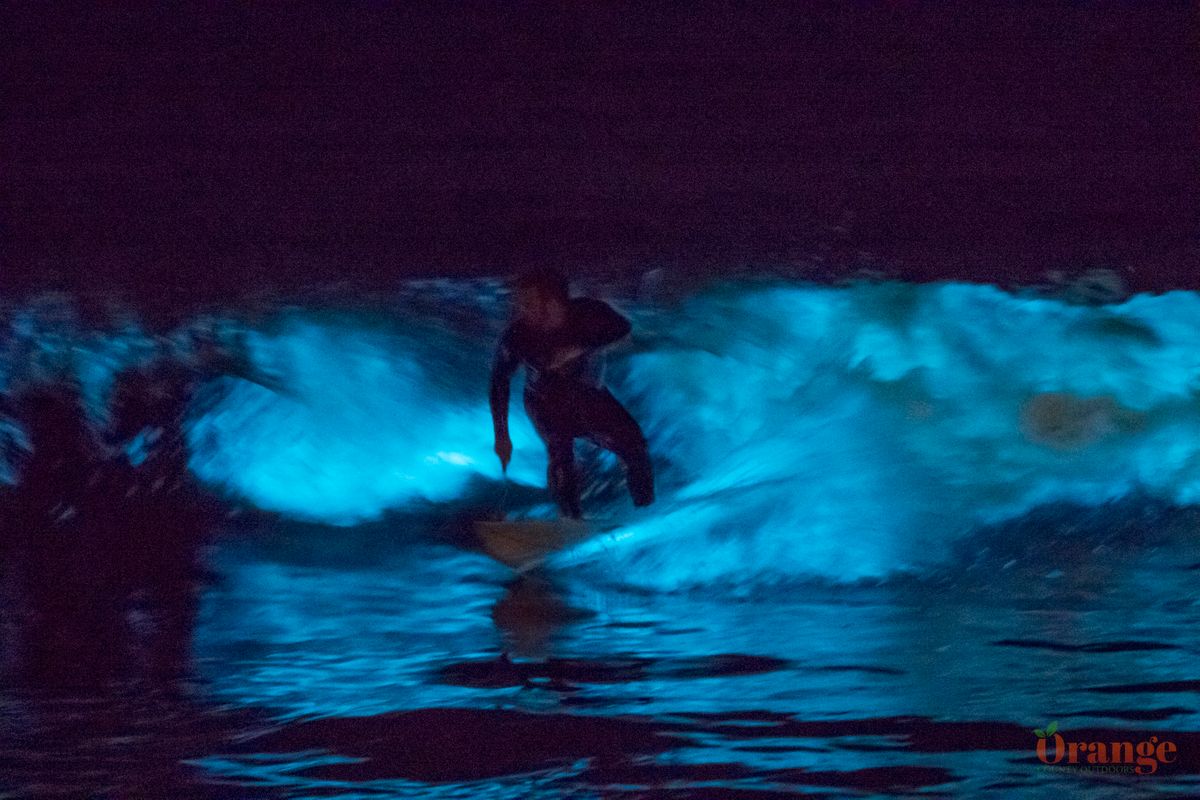
How to find the neon waves
It's a very common question that we "bio chasers" get but there's is no way to accurately predict when and where this phenomenon will take place and when. However, we can guess based on several varying factors and sometimes our guesses are spot on while other times they're totally off. There are a few of us that seek out these bioluminescent waves very frequently and we're learning about what factors come into play to make this happen:
Red tide - This is the main factor needed for the bioluminescence to occur. Sometimes red tide is thick while sometimes it's very spotty/thin and spread out in streaks. While small patches/streaks of red tide will cause some bioluminescence, it will be faint and not consistent. The best is when there's nice, thick areas of red tide which looks like rusty colored water. That's what will light up nice and bright and consistent. Dinoflagellates are what make the water rusty colored, they are microscopic organisms that can't be seen individually with the naked eye but can be seen as cloudy rusty colored water as they form in the millions.
Sunlight - Dinoflagellates need to recharge each day before lighting up at night. They recharge by photosynthesis, catching sunlight during the day and storing this energy. If it's cloudy all day, they can't recharge as much. You can think of it like a solar panel, when it's cloudy there's still ambient light so you'll get some energy but not nearly as much as direct sunlight.
Wind - In order for the dinoflagellates to light up, they need to be in a clam state and then all of a sudden be disturbed which causes them to light up as they get agitated. When it's windy (as it often is along the coast), the ocean is turbulent and therefore, the dinoflagellates are constantly agitated and won't light up from the waves. You want a calm sea state with nice waves.
Waves - The most common way to watch bioluminescence is at the beach as the waves light up, but you need to have the right waves for this to happen. Large or small waves can both be good for bioluminescence but if the waves are breaking too close to shore, they won't light up. The waves need to break in the water outside the sand and whitewash in order to light up. Where the whitewash is, the water is already disturbed. Small, rolling waves tend to have longer lasting bioluminescence while larger waves tend to have shorter lasting bioluminescence but can light up brighter.
Is this a new phenomenon?
No, bioluminescence has been happening since sailors began sailing the sea and however long before that. While there is still a lot that's unknown about these plankton blooms, scientists are learning more about it every year. Surfers and fishermen have been watching bioluminescence for a long time. What is new though, is the ability to photograph it! Before recent times, very few cameras were able to document these events, yet alone having an experienced photographer pushing the camera to its limits to capture this low light event and happen to be at the right place, at the right time.
In recent years (2020-2023), these newer phones have better low light capable cameras that can actually pick up these glowing waves. So now we hear about it more because people are able to document it and post about it on social media. Even with that being said, it happens much more than we even know. We've stood on the beach and watched bright bioluminescent waves crash along the beach while also noting several groups of people walk along the shoreline completely oblivious to it. Many people are distracted by their conversations or or simply not thinking to look at the waves for bioluminescence.
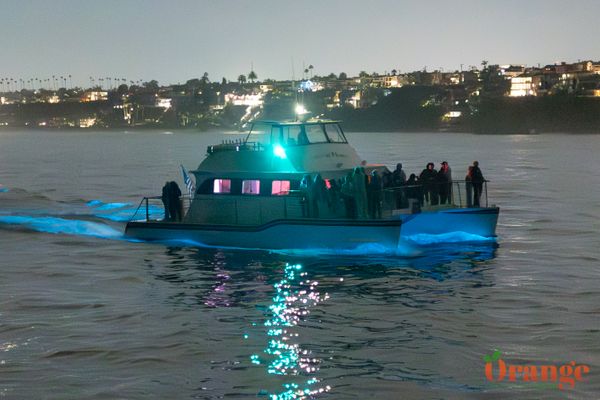
Bioluminescent boat tours
This years bioluminescence has been so strong that whale watching boats from Davey's Locker and Newport Coastal Adventure have started running bioluminescent tours. These tours have been such a great opportunity for people to get out and see nature in her full beauty! Many of the trips have been lucky enough to see dolphins swimming through the bioluminescence as well. These tours have been selling out very fast but you can try to get a spot while the bio is still around by visiting Davey's Locker.
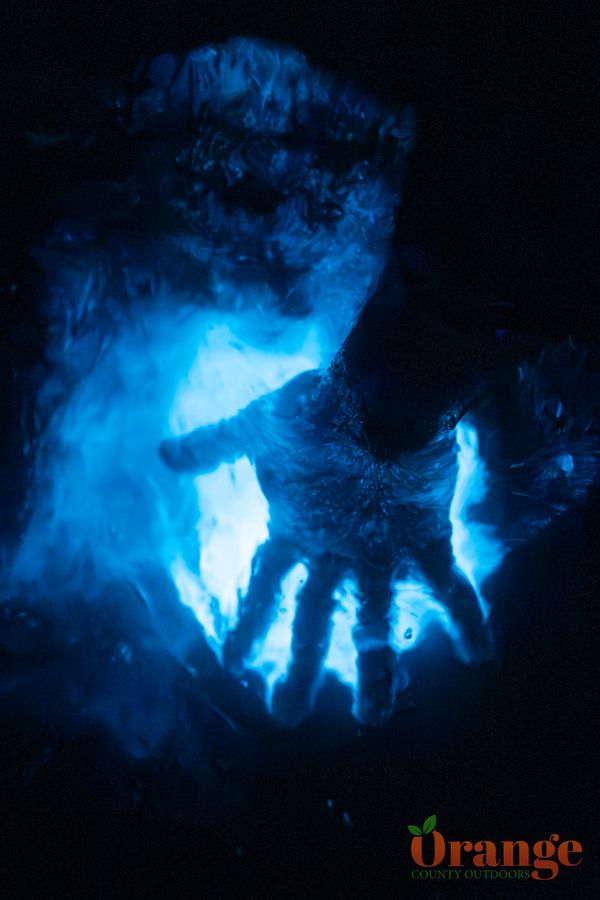
Pyro Farms
A scientist that calls San Diego home, has figured out how to collect bioluminescent water and purify it which filters out everything else except for the saltwater and dinoflagellates. By doing this, he has made it so you can have bioluminescent water that lasts quite a long time! It's really a very cool thing to have in your house. You can purchase your own bioluminescent water from Pyro Farms.
Did you miss the action?
August/September 2023's red tide bloom was a very good one that peaked for several weeks. If for some reason you were not able to get down to the beach and see it for yourself, you definitely missed out! Don't worry though, it'll happen again, but now the question is when? There is no way to predict when a red tide event will happen. It may happen again in a week, a month, a year, or even longer. We know that there are a few factors that typically occur before a strong red tide event with the main factor being lots of rain, but blooms can still happen as the ocean currents are always moving things around.
The best way to find bioluminescence is to simply check a few beaches randomly on any given night. It's very common for people to ask when and where it will be and very rare to have people actually searching for it and reporting their findings. It is also very common for people to be at the beach at night and not even notice bioluminescent waves. This is why your best bet is to simply check a few beaches and see for yourself, the least you get out of it is a nice walk on the beach at night which is very peaceful and relaxing. Good luck!
